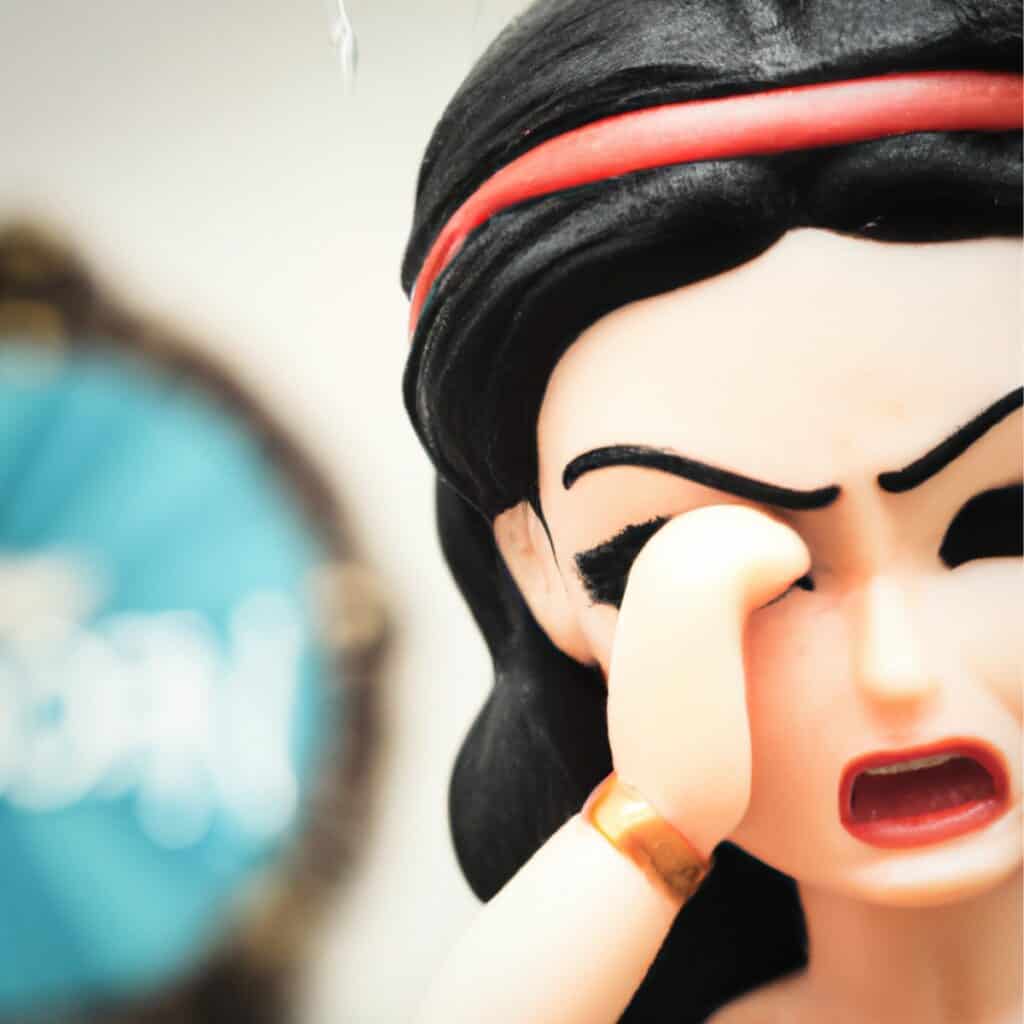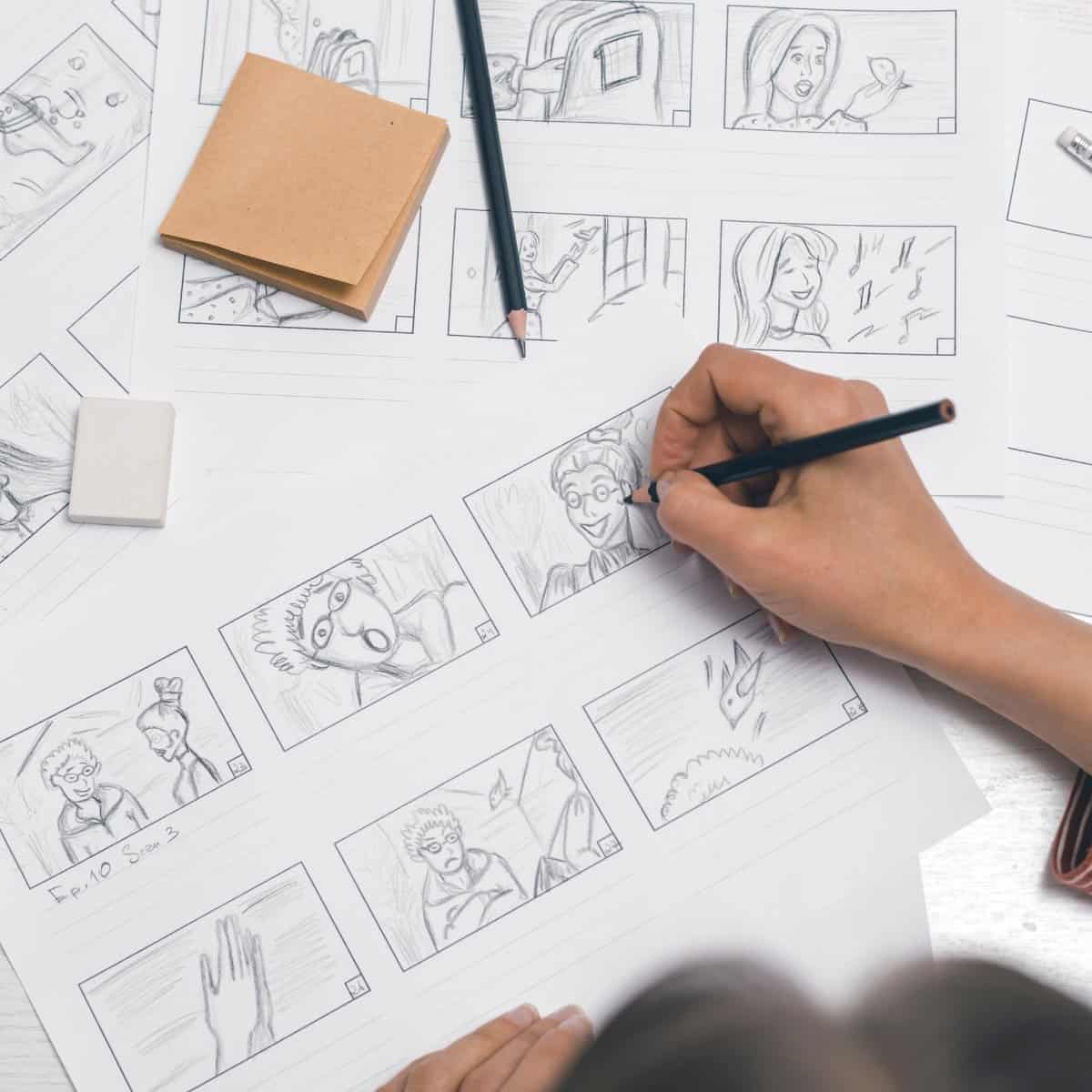Exaggeration in Animation: How to Use it to Bring Your Characters to Life
Exaggeration is a tool used by animators to make their characters more expressive and entertaining. It’s a way of going beyond reality and making something more extreme than it actually is.
Exaggeration can be used to make something look bigger, smaller, faster, or slower than it actually is. It can be used to make something look more or less intense than it actually is, or to make something look happier or sadder than it actually is.
In this guide, I’ll explain what exaggeration is and how it’s used in animation.

In this post we'll cover:
Pushing the Boundaries: Exaggeration in Animation
Picture this: I’m sitting in my favorite chair, sketchbook in hand, and I’m about to animate a character jumping. I could stick to the laws of physics and create a realistic jump (here’s how to make stop motion characters do that), but where’s the fun in that? Instead, I opt for exaggeration, one of the 12 principles of animation created by early Disney pioneers. By pushing the movement further, I add more appeal to the action, making it more engaging for the audience.
Breaking Free from Realism
Exaggeration in animation is like a breath of fresh air. It allows animators like me to break free from the constraints of realism and explore new possibilities. Here’s how exaggeration comes into play in various aspects of animation:
Staging:
Exaggerated staging can emphasize the importance of a scene or character, making them stand out.
Movement:
Exaggerated movements can convey emotions more effectively, making characters more relatable.
Frame-by-frame navigation:
By exaggerating the spacing between frames, animators can create a sense of anticipation or surprise.
Application of Exaggeration: A Personal Anecdote
I remember working on a scene where a character had to jump from one rooftop to another. I started with a realistic jump, but it lacked the excitement I was aiming for. So, I decided to exaggerate the jump, making the character leap higher and farther than what would be physically possible. The result? A thrilling, edge-of-your-seat moment that catches the audience’s attention.
Secondary Actions and Exaggeration
Exaggeration isn’t limited to primary actions like jumping or running. It can also be applied to secondary actions, such as facial expressions or gestures, to enhance the overall impact of a scene. For instance:
Getting started with your own stop motion storyboards
Subscribe to our newsletter and get your free download with three storyboards. Get started with bringing your stories alive!
We'll only use your email address for our newsletter and respect your privacy
- A character’s eyes might widen to an unrealistic size to show surprise.
- An exaggerated frown can emphasize a character’s disappointment or anger.
By incorporating exaggeration into both primary and secondary actions, animators like myself can create captivating animations that resonate with audiences.
How exaggeration is used
You know, back in the day, Disney animators were the pioneers of exaggeration in animation. They realized that by pushing movement beyond realism, they could create more appealing and engaging animations. I remember watching those classic Disney films and being captivated by the exaggerated movements of the characters. It’s like they were dancing on the screen, drawing me into their world.
Why Audiences Love Exaggeration
I’ve always believed that the reason exaggeration works so well in animation is because it taps into our innate love for storytelling. As humans, we’re drawn to stories that are larger than life, and exaggeration allows us to convey those stories in a visually compelling way. By pushing movement and emotions beyond the realm of realism, we can create animations that resonate with audiences on a deeper level. It’s like we’re giving them a front-row seat to a world where anything is possible.
Exaggeration: A Timeless Principle
Even though the pioneers of animation developed the principles of exaggeration decades ago, I find that they’re still just as relevant today. As animators, we’re always looking for ways to push the boundaries of what’s possible and create animations that captivate our audiences. By using exaggeration, we can continue to tell stories that are both engaging and visually stunning. It’s a principle that’s stood the test of time, and I have no doubt it’ll continue to be a cornerstone of animation for years to come.
Mastering the Art of Exaggeration in Animation
As an aspiring animator, I’ve always looked up to the legendary duo of Frank Thomas and Ollie Johnston, who introduced the concept of exaggeration in animation. Their teachings have inspired me to push the boundaries of my own work, and I’m here to share some tips on how to use exaggeration effectively in your animations.
Emphasizing Emotions through Exaggeration
One of the key aspects of exaggeration is using it to portray emotions more vividly. Here’s how I’ve learned to do it:
- Study real-life expressions: Observe people’s facial expressions and body language, then amplify those features in your animation.
- Exaggerate timing: Speed up or slow down actions to emphasize the emotion being portrayed.
- Push the limits: Don’t be afraid to go overboard with your exaggerations, as long as it serves the purpose of conveying the emotion.
Accentuating the Essence of an Idea
Exaggeration isn’t just about emotions; it’s also about accentuating the essence of an idea. Here’s how I’ve managed to do that in my animations:
- Simplify: Strip down your idea to its core and focus on the most important elements.
- Amplify: Once you’ve identified the key elements, exaggerate them to make them more prominent and memorable.
- Experiment: Play around with different levels of exaggeration to find the perfect balance that brings your idea to life.
Using Exaggeration in Design and Action
To truly master exaggeration in animation, you need to apply it to both design and action. Here are some ways I’ve done that:
- Exaggerate character design: Play with proportions, shapes, and colors to create unique and memorable characters.
- Exaggerate movement: Make actions more dynamic by stretching, squashing, and distorting your characters as they move.
- Exaggerate camera angles: Use extreme angles and perspectives to add depth and drama to your scenes.
Learning from the Experts
As I continue to hone my animation skills, I find myself constantly revisiting the teachings of Frank Thomas and Ollie Johnston. Their wisdom on the art of exaggeration has been invaluable in helping me create more engaging and expressive animations. So, if you’re looking to improve your own work, I highly recommend studying their principles and applying them to your own animations. Happy exaggerating!
Why Exaggeration Packs a Punch in Animation
Imagine watching an animated film where everything is realistic and true to life. Sure, it might be impressive, but it would also be, well, kind of boring. Exaggeration adds that much-needed spice to the mix. It’s like a jolt of caffeine that wakes up the viewer and keeps them engaged. By using exaggeration, animators can:
- Create memorable characters with distinctive features
- Emphasize important actions or emotions
- Make a scene more dynamic and visually interesting
Exaggeration Amplifies Emotions
When it comes to conveying emotions, exaggeration is like a megaphone. It takes those subtle feelings and cranks them up to 11, making them impossible to ignore. Exaggerated facial expressions and body language can:
- Make a character’s emotions instantly recognizable
- Help the audience empathize with the character’s feelings
- Enhance the emotional impact of a scene
Exaggeration and Visual Storytelling
Animation is a visual medium, and exaggeration is a powerful tool for visual storytelling. By exaggerating certain elements, animators can draw the viewer’s attention to what’s most important in a scene. This can be especially useful when trying to convey a complex message or idea. Exaggeration can:
- Highlight key plot points or character motivations
- Simplify complex concepts for easier understanding
- Create visual metaphors that help drive the message home
Exaggeration: A Universal Language
One of the beautiful things about animation is that it transcends language barriers. A well-animated scene can be understood by viewers from all around the world, regardless of their native language. Exaggeration plays a big role in this universal appeal. By using exaggerated visuals, animators can:
- Communicate emotions and ideas without relying on dialogue
- Make their message accessible to a wider audience
- Create a sense of unity and shared understanding among viewers
So, the next time you’re watching an animated film or show, take a moment to appreciate the art of exaggeration. It’s the secret ingredient that makes animation so captivating, engaging, and downright fun.
Conclusion
Exaggeration is a great tool to use when you want to add some life to your animation. It can make your characters more interesting and your scenes more exciting.
Don’t be afraid to exaggerate! It can make your animation better. So don’t be afraid to push those boundaries!
Hi, I'm Kim, a mom and a stop-motion enthusiast with a background in media creation and web development. I've got a huge passion for drawing and animation, and now I'm diving headfirst into the stop-motion world. With my blog, I'm sharing my learnings with you guys.
